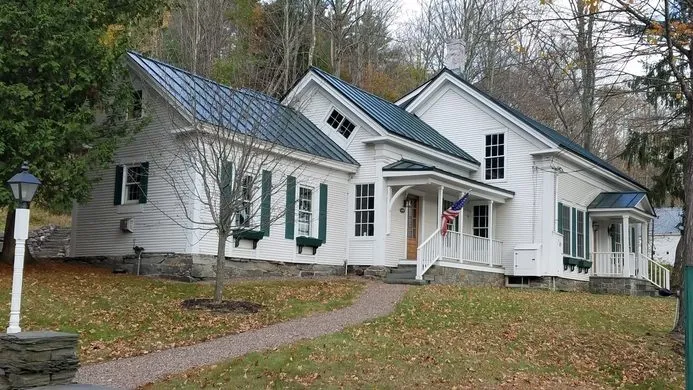Witches are invisible, as anyone who has ever seen one will tell you…
- LDD Interiors
- Oct 20, 2022
- 2 min read

Replete with myths, legends, and ghost tales, New England has a rich history of spooky lore. Aptly, a window placed in a structure at roughly a 45-degree angle, found mainly nestled through the architecture in Vermont, is known as a “witch window”. A clever way to recycle, such windows are known by their peculiar moniker because such orientation is not conducive to witches’ flight patterns. Witches can fly directly into a vertically oriented window with ease, but not through such a tilted window, so the story goes!
Windows are integral to the structure of a proper home. A quaint New England feature, witch windows allow light to enter spaces that would otherwise not allow for a vertically oriented window. They connect the indoors and the outdoors, inviting a bit of nature inside and, by corollary, inviting the inside out, connecting to and informing one another. In an age of ideologies and virtual realities, the hyperreal, strange fantasy worlds, and abundant technology, it is ever important to be grounded in nature—to understand how it functions, to have a grasp on reality, truth, the real world and how it functions. It humbles and expands the mind. Windows allow us to connect with nature to an extent while still indoors, providing a multitude of benefits
Legends and spooky stories reach to our core too, often reminding us of our human nature, exploring the psyche and allowing for our imaginations to wander. With all its different seasons, New England is a prime location for coming up with ghost stories, lore, and names for architectural features that point out the history of the area. Taking the time to slow down and take in the architecture leads to stories, questions, and conversations. Witch windows add to the charm of New England. Keep your eyes peeled for them—and for those invisible witches, of course.

BY KATE RIOTTE Design Assistant
Kate came to LDD from a career in the curatorial department of a major art museum. Having grown up in an old Greek Revival/Italianate fixer-upper house, and through her study abroad experiences in England, Italy, and Mexico, Kate has been and is continually inspired by architecture and design.




Comments